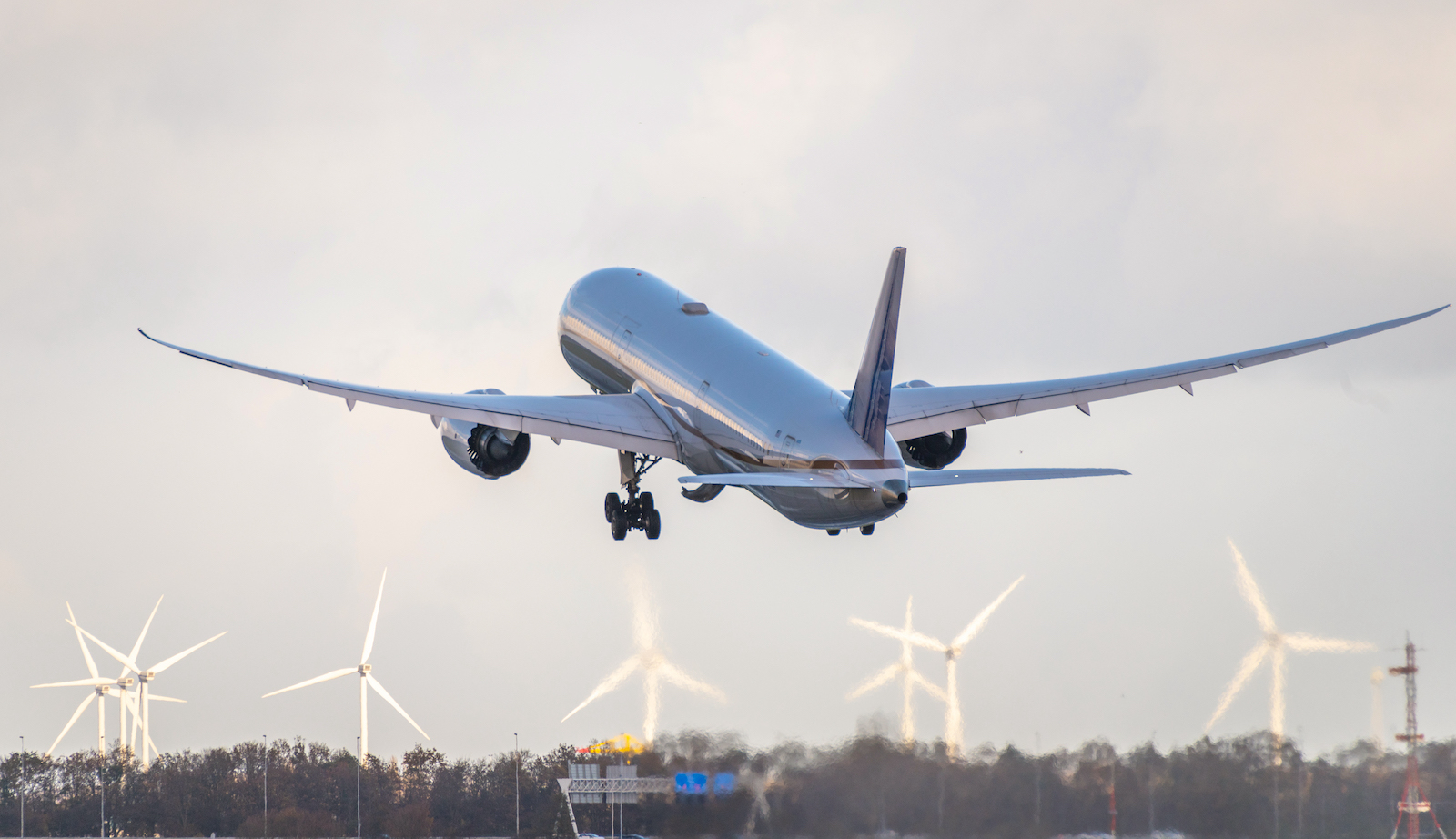For those hoping to slow the halt of climate change, aviation often seems like a near-intractable problem. Roughly 115,000 flights take off and land around the world every day, accounting for 3 percent of global carbon dioxide emissions. A single passenger flying from San Francisco to London is responsible for around 1 metric ton of carbon dioxide spewed into the atmosphere – about half the emissions that a citizen of India, on average, releases in a whole year.
But, according to a new report from the International Council on Clean Transportation, or ICCT, it is possible to reduce aviation emissions enough to keep global warming below 2 degrees Celsius. It will just take enormous amounts of money, effort, and — perhaps most importantly — sustainable fuel.
“Everybody needs to push for as low as they can go,” said Brandon Graver, a senior researcher for ICCT’s aviation program and the lead author of the report. “It’s going to cost a lot of money, but we have to make plans now. We can’t wait until 2030 or 2040.”
Other studies and roadmaps have examined possible pathways to net-zero carbon emissions for aviation, but the report from the Washington, D.C.-based nonprofit is the first to analyze which pathways can align with global climate goals set out in the 2015 Paris Agreement. The authors sketched out four possible futures: a baseline, or business-as-usual scenario, and several increasingly ambitious scenarios for improving aircraft efficiency and building out the supply of sustainable fuels.
In the scenario with the most aggressive carbon-cutting measures, known as the “breakthrough” scenario, the authors found that aviation emissions could be decreased in line with a 1.75-degrees C temperature goal. That is somewhat in line with the Paris Agreement, which promised to keep global warming “well below” 2 degrees C above pre-industrial temperatures. It’s still not in line, however, with calls to reach the more ambitious 1.5 degrees C.
Graver said that if the industry hopes to cut emissions, the bulk of it must come from a transition to sustainable aviation fuels, or fuels made from products such as wood chips, corn, cooking oils and greases, and municipal solid waste. Sustainable aviation fuels are available now — but only in small quantities, enough to cover less than 0.1 percent of total jet fuel use globally. At the moment, they also cost at least twice as much as jet fuel. In the best-case scenario laid out in ICCT’s report, sustainable fuels would need to cover 17 percent of aviation fuel use by 2030, and 100 percent by 2050.
For that to happen, the supply of aviation biofuels would need to grow substantially in the next five to 10 years. By 2030, in the “breakthrough” scenario, 46 million metric tons would need to be available on the global market. By 2050, that number would have to jump to 100 million tons.
Other technologies and policy changes could also contribute to cutting emissions. The ICCT report estimates that electric and hydrogen planes could start taking over a small share of the global aviation market by the 2030s; meanwhile, improvements to air traffic control and aircraft efficiency could also reduce fuel usage. Shifts in demand away from aviation toward other forms of transportation — like trains where available — could also help.
The biggest problem, however, is who is going to pay for it all. According to a report from the International Civil Aviation Organization, or ICAO, a U.N. agency that sets standards for international aviation, reaching net-zero emissions would cost around $4 trillion through the year 2050. And while many airlines have made plans and promises to cut their carbon emissions, governments are going to need to help covering the costs.
ICAO is planning to meet in the fall to establish a long term goal for aviation emissions; thus far, the agency has not committed to net-zero. But Graver believes that the agency will try to set new, ambitious goals.
“I have to be optimistic,” he said, even while acknowledging the huge challenge of decarbonizing a fossil fuel-burning industry. “I would like my kids to have the same opportunities to travel and see the world that I’ve had.”
This piece has been updated to reflect the role of ICAO in setting standards for international aviation.




